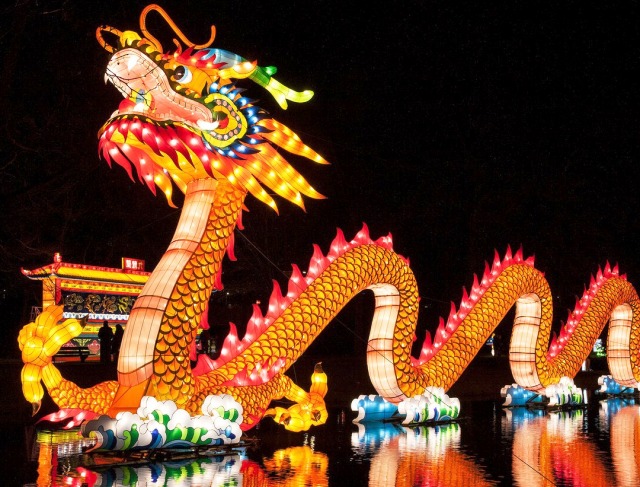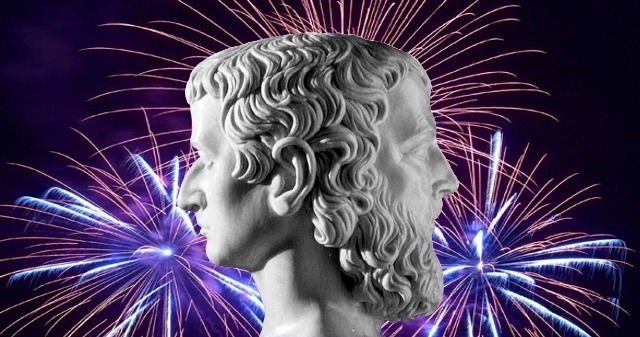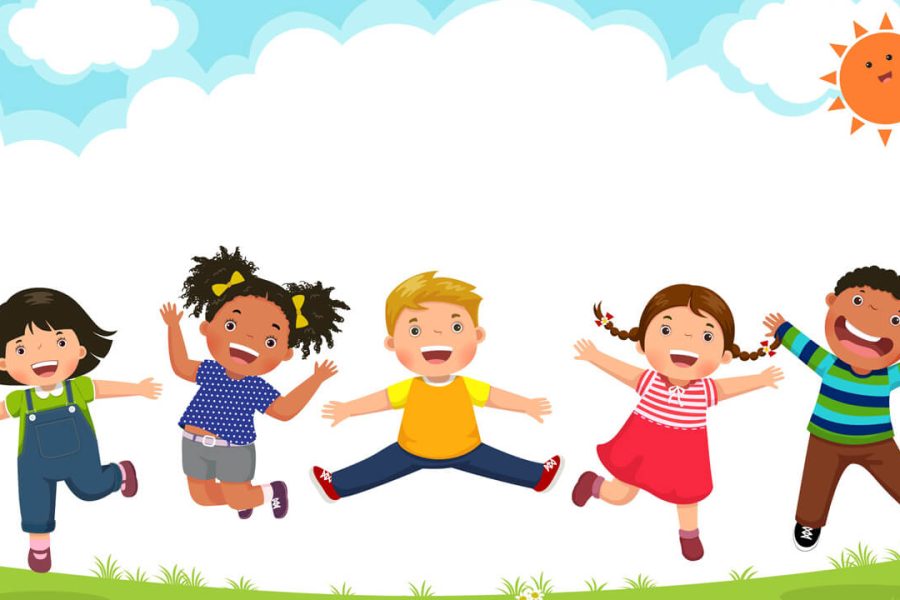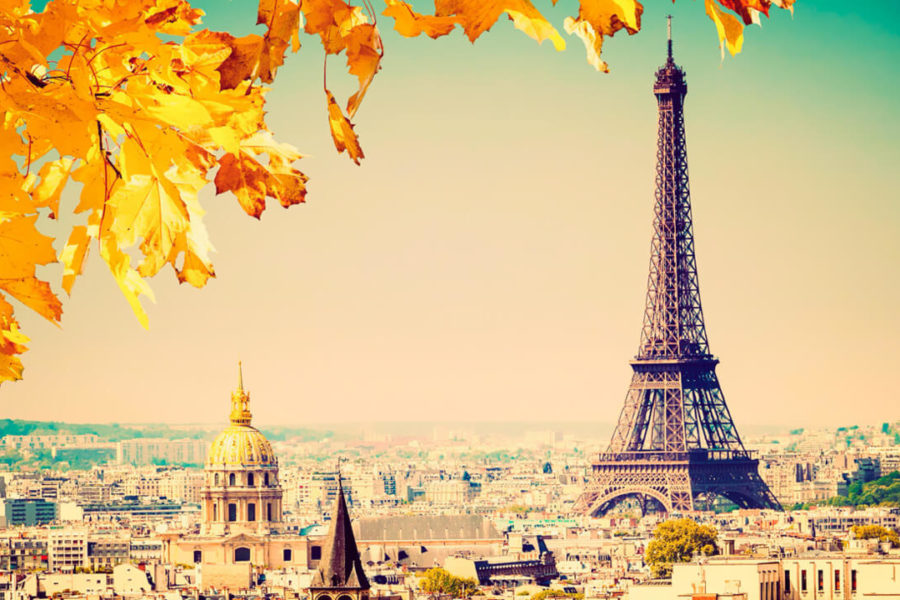New Year is a time of magic, joy and hope. This holiday is celebrated all over the world with different traditions and customs. Let's look at 10 interesting and educational facts for children and adults that you may not know about the New Year 2025.
1. Year of the Animal in the Chinese Calendar: Secrets of the Snake
The Chinese calendar, also known as the lunar calendar, has its own unique system of marking the years by alternating twelve animals and five elements: wood, fire, earth, metal and water. Each year represents a combination of animal and element, for example, according to this calendar, 2025 will be the year of the Snake. In the magical world of the Chinese calendar, 2025 promises to be an especially exciting year. This symbolic and majestic character, according to Chinese tradition, carries unique characteristics and predictions for the coming year.

What is New Year:
- The dragon is a symbol of strength and luck: In Chinese culture, the Dragon is considered a symbol of strength, luck and prosperity. Its image is associated with power and protection, and the New Year is considered a special period when these qualities acquire special significance.
- Element of the year: Wood: The wood element gives this year the properties of growth, development and stability. The dragon, connected with this element, can bring new ideas, creative inspiration and renewal.
- Color of the year: Green: Green symbolizes nature, freshness and renewal. Combined with the Dragon and the wood element, green adds an atmosphere of growth and fertility to the year.
Predictions and beliefs:
The Year of the Snake is considered a favorable time for the implementation of ambitious projects, creative endeavors, and important decisions. People believe that this period can bring not only luck, but also inspiration for the implementation of the boldest ideas.
The Dragon is believed to bring a spirit of adventure and opportunity to the year for those who are willing to boldly move forward. The Year of the Snake 2025 is a period when the majestic possibilities of the future become available, and everyone can experience the magic of strength and well-being that this powerful symbol brings.
2. Holidays around the world: diversity of dates and traditions
New Year is a unique holiday that is celebrated annually all over the world, but there is amazing diversity in how, when and with what traditions different cultures celebrate it.

- Western countries: January 1 In most Western countries, New Year's Day is celebrated on January 1st, according to the Gregorian calendar. This day is usually associated with fireworks, champagne, and fun. Traditionally, people gather together to welcome a fully-fledged new calendar year.
- China: late January – early February In China, the New Year, also known as the Spring Festival, is celebrated depending on the lunar calendar. It can be in late January or early February. Festive events last for 15 days, including a traditional dragon parade, fireworks and family dinners.
- Russia: December 31 – January 1 In Russia, New Year celebrations begin on December 31 and continue until January 1. The main focus is on the midnight hour, when crackers are heard, fireworks are launched, and houses are filled with joy. Father Frost and Snow Maiden also bring gifts to children.
- India: Variety of Dates In India, different states may celebrate the New Year at different times throughout the year. For example, Deepavali (Diwali) in October-November in the northern part of the country is considered the New Year in some Indian regions.
- Southeast Asia: Songkran and Tet In some Southeast Asian countries, such as Thailand and Vietnam, the New Year is celebrated with events such as Songkran and Tet, respectively. Songkran in Thailand is famous for its water fights, while Tet in Vietnam is accompanied by traditional songs and festive parades.
This diverse nature of New Year's celebrations demonstrates how important this holiday is for different cultures and peoples, and how unique traditions can be in every corner of the planet.
3. Mysterious Traditions: Food for Good Luck in the New Year
In different parts of the world there are amazing traditions associated with the preparation and consumption of certain dishes on the eve of the New Year. The belief that certain products can attract good luck and prosperity is firmly embedded in the cultural heritage of many peoples. One of the most striking examples of such traditions is the Italian ritual practice of using pork fat.

In Italy, especially in the Lombardy region, a traditional symbol of abundance and good fortune in the coming year is "cotechino con lenticchie" - a thick pork sausage served with lentils. This dish is traditionally prepared and eaten in the family circle on the New Year's table.
Lentils, which resemble gold coins, symbolize wealth and prosperity. Together with thick sausage, which represents abundance, these foods become an integral part of the New Year's dinner. People believe that eating this dish on the first day of the new year will bring financial luck for the next 12 months.
It is incredibly interesting to observe how food traditions can become symbols not only of taste and pleasure, but also mystical guides to a better future. The Italian tradition with cotechino con lenticchie is a vivid example of how food can become part of rituals that connect people and fill festive events with special meaning.
4. The first month of the year is a mythological character
January, the first month of the year in the Gregorian calendar, has an interesting origin for its name. The month was named after the Roman god Janus, who symbolized the beginning and the end, the past and the future. Janus was depicted with two faces – one facing forward, to the new year, and one facing back, to the past year.

This ancient mythological character was the god of doors and thresholds, entrances and exits. Therefore, January, named after Janus, became a symbol of the time of change and new beginnings.
The Romans traditionally celebrated the beginning of the new year at the beginning of March, but in 153 BC the Roman Senate decided to move the beginning of the year to January 1 due to more accurate astronomical calculations. Since then, January 1 has become not only the beginning of the new year, but also a symbol of opportunity, promise, and renewal.
Although the image of Janus is often associated with ancient mythology, its influence continues to be felt in modern society. In a world where each new year brings fresh hope and opportunity, we, like the Romans thousands of years ago, look to this month as a time of new beginnings and rethinking our lives.
5. Ancient roots of New Year holidays
The celebration of the New Year has its roots in ancient times and is permeated with various traditions that come from different parts of the world. One of the oldest known manifestations of New Year celebrations is the Mesopotamian celebration, which was celebrated about 4,000 years ago.

In Mesopotamia, in what is now Iraq, New Year celebrations were linked to agriculture and the cycles of nature. People celebrated the return of spring and the new agricultural year. They made sacrifices to the gods, performed religious rites, and held festive celebrations.
In ancient Rome, the new year began on March 1st, and at that time there was a festival dedicated to the god Mars, the god of war and agriculture. The Romans celebrated the transition from winter to spring and believed that this period brought renewal and growth.
Over time, New Year's traditions have changed and evolved under the influence of different cultures. Different countries have established different dates for the beginning of the new year, and unique customs and rituals have developed.
Even today, when we celebrate the New Year, we continue to perceive it as a period of renewal and opportunity. Ancient traditions have become part of the world's cultural heritage, uniting people in their desire to meet a new stage of life with optimism and joy. In this context, the New Year celebration becomes a kind of bridge between the past and the future, uniting us in the understanding that each new year brings the opportunity for new beginnings and fresh achievements.
6. Mysterious Traditions: Celebrating New Year in China
Chinese New Year, also known as the Spring Festival or Chongji, is one of the most exciting and colorful festivals in China's cultural heritage. It is celebrated on the first day of the first month of the lunar calendar and lasts for 15 days, ending with the Full Moon Festival.

One of the most visually impressive features of Chinese New Year is the traditional use of fireworks and firecrackers. This aspect of the holiday is not just entertainment, but also has deep historical roots and symbolism.
- Symbolism of fireworks. Fireworks in China are not just a colorful spectacle; they also serve as symbols of exorcism. It is believed that the noise from firecrackers and the sparkling light of fireworks can scare away evil spirits and bring good luck for the coming year.
- Colored lights. Each color of fireworks has its own meaning. Red colors are associated with joy and happiness, green colors with health and safety, and gold and silver colors with wealth and prosperity. Thus, explosions of multi-colored fireworks create an atmosphere of joy and positivity.
- Fireworks festival. The peak of Chinese New Year celebrations, Chinese New Year, is accompanied by huge fireworks displays, especially in the cities. In megacities like Shanghai and Beijing, the sky literally lights up with a multitude of colorful flashes and sparkling lines, creating an impressive spectacle.
- Traditional firecrackers. Besides fireworks, traditional firecrackers are also an integral part of New Year celebrations. Their distinctive sound brings joy and creates an atmosphere of festive excitement. It is important to note that the Chinese believe that the more firecrackers they light, the greater the chances of good luck and prosperity in the new year.
Thus, the Chinese New Year celebration with its impressive fireworks and firecrackers not only attracts attention with its colorfulness, but also enriches the holiday with symbolism that goes back centuries.
7. New Year's resolutions - a new turn in life
The tradition of setting New Year's resolutions has deep roots and echoes ancient customs across cultures. The practice is based on the desire for personal improvement and self-improvement in the new year.

Here are some fun facts about New Year's resolutions:
- Ancient Promises: The idea of New Year's resolutions goes back to the ancient Babylonians. More than 4,000 years ago, they practiced a ritual in which, at the beginning of the year, each subject made a vow to the gods, promising to improve their lives.
- Popularity in modern society: New Year's resolutions have become especially popular in modern society, where people see the start of a new year as an opportunity to start over. Wish lists and resolutions can cover various aspects of life, including health, career, relationships, and personal development.
- Goals and plans: New Year's resolutions are based on specific goals and plans. People usually formulate their resolutions so that they are measurable, achievable, and have a specific deadline.
- The most common promises are: Some of the most common New Year's resolutions include starting to exercise, eating better, quitting smoking, saving money, learning new skills, or improving the quality of your relationships.
- Problems with execution: Despite good intentions, many people struggle to keep their New Year's resolutions. This may be due to a lack of motivation, a lack of an action plan, or poor goal setting.
- Tips for successfully keeping promises: Motivation experts recommend setting realistic goals, developing detailed action plans, avoiding excessive self-criticism, and finding support in your environment. It is also important to remember that every day is a new chance to start over.
New Year's resolutions have become an integral part of celebrating the transition from the old to the new year. Not only can these resolutions promote personal growth, but they also create a sense of a new beginning, filling life with optimism and enthusiasm.
8. Symbols of good luck: customs and rituals
The tradition of associating the New Year with symbols of good fortune has found its way into various customs and rituals around the world. In Chinese culture, one of the most common and endearing customs is the gifting of red envelopes filled with money, known as “hongbao.” This custom involves elders or superiors giving these red envelopes to their juniors or subordinates during the holiday. The color red is considered a symbol of good fortune and happiness in Chinese culture.
There is also a belief in Chinese tradition that various objects and symbols can bring good luck in the new year. For example, the image of a fish is associated with excess and abundance, and red dragons symbolize strength and protection.

Other cultures also have their own symbols of good luck. For example, in Russian tradition, it is believed that the first guest in the house after midnight will bring good luck. Such customs give the holiday special significance, creating an atmosphere of positivity and hope for well-being in the year that is just beginning.
The tradition of associating the New Year with symbols of good luck not only adds color to the holiday, but also reminds us of the importance of hope, positive thinking and faith in a bright future. After all, each symbol, be it a red envelope, a picture of a dragon or other attributes, carries hope for prosperity and happiness in the coming year.
9. Father Christmas and Santa Claus: Cultural Differences in New Year Celebrations
There are many traditions and customs around the world when it comes to celebrating New Year, and one of the most recognizable elements is the folklore characters that bring joy and gifts. Two of the most famous and popular characters that bring magic to the holiday season are Father Christmas and Santa Claus.
Father Frost in Russia: In Russian tradition, Father Frost is the central figure of the New Year celebrations. This kind and cheerful old man in a red coat with white fur and a bag of gifts appears at festive events, gives gifts to children and adults, and brings joy with his visit. Accompanied by Snegurochka, his granddaughter, Father Frost travels from house to house, giving gifts and wishing the household good luck and joy in the new year.

Santa Claus in Western countries: In Western culture, the great gift-giver is represented by Santa Claus. This cheerful and comfortably dressed Jolly man with a white beard and red suit appears at Christmas, but his influence is felt in the run-up to the New Year. Santa Claus brings gifts to children who leave their stockings or gift pendants in front of the fireplace. His sleigh, pulled by reindeer, has become an integral attribute of his image.
Differences and Similarities: Although Ded Moroz and Santa Claus may differ in appearance and traditions, they have one common goal – to bring joy, kindness and a festive mood. Both characters also symbolize the giving of gifts as a sign of love and care for loved ones. Despite cultural differences, these folklore heroes serve as symbols of kindness and magic, uniting people around the world in a festive atmosphere of fun and joy.
10. The first New Year in space
One of the most exciting historical moments in the history of New Year was the celebration of this holiday in space. This epic moment happened in 1968 during the Apollo 8 mission, part of the Apollo program organized by NASA to explore the Moon.

The Apollo 8 crew included astronauts Frank Borman, Jim Lovell, and William Anders. The mission was the first in history to take humans out of Earth orbit and toward another object in space: the Moon.
Borman, Lovell, and Anders launched into space on December 21, 1968, and returned to Earth on December 27. In the period between these dates, while they were orbiting the Moon, the Apollo 8 crew celebrated the New Year.
During that historic moment, the astronauts transmitted a message back to Earth. Frank Borman said, "We're orbiting the moon. We're going to send you the biggest card ever. It says 'Merry Christmas and a Happy New Year.'"
The astronauts circled the Moon several times, looking at its surface and capturing this historic moment in photographs. This feat became a symbol of human progress in space exploration and at the same time reminded us all that the New Year is a time of opportunities and new horizons.
New Year is a time of opportunity, hope and fun.
These facts are just a small part of what makes this holiday so special and amazing for people all over the world. Celebrate with joy and optimism, leaving behind the old and welcoming the new with an open heart.













Оставить Комментарий